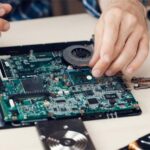Métropole and Chef-lieu with 5G Tester Equipment & RF Drive Test Tools
As our world becomes increasingly interconnected, the concept of smart cities has emerged as an alarm of hope for more efficient, sustainable, and citizen-centric urban living. In an era of rapid urbanization, technology or connectivity is at the heart of smart cities’ transformation as urban environments are reshaping how we live, work, and interact with our surroundings. Connectivity brings transformation for urban living that is reshaping the way cities are planned, operated, and experienced – revolutionizing urban living, encompassing infrastructure, transportation, and citizen services. So, now let us look into transforming urban living through connectivity along with Reliable 5g tester, 5G test equipment, 5g network tester tools and Reliable 4G Testing RF drive test software, Cellular LTE RF drive test tools & equipment in detail.
With network connectivity, smart cities promise an era of unprecedented urban efficiency, sustainability, and quality of life – these enhancements make the city more attractive to homebuyers, businesses, and investors. Further, connectivity (rollout of free ultra-fast public Wi-Fi surpassing the capabilities of early 5G) implements the power of the Internet of Things (IoT), big data, artificial intelligence (AI), and more, so smart cities promise an era of unprecedented urban efficiency, sustainability, and quality of life.
Smart Cities enhance daily life through connectivity by offering a range of connected CCTV cameras, intelligent road systems, and public safety monitoring systems. Such advantages are possible through uninterrupted 5G connectivity, which ensures seamless mobility for homeowners and tenants, without experiencing connection drops. Forward-thinking property developers and landlords will witness first-hand the advantages of early adoption by adopting smart technology.
Smart City is also utilizing the Internet of Things (IoT) that leverages to implement a telecare system in the homes of elderly and vulnerable individuals. Interconnected devices equipped with sensors and software benefit from data exchange, enabling remote operation of day-to-day tasks – starting from managing curtains and doors to monitoring medication intake and nutrition to enhance the quality of life for residents.
Here are the ways, smart cities with connectivity are transforming urban living.
Enhanced transportation systems: Transportation is a cornerstone of urban living so the connected smart cities are redefining the urban commute by implementing intelligent transportation systems. cities are employing technology to enhance transportation infrastructure and to streamline public transportation through dynamic traffic management that alleviates congestion to connected vehicles.
- The efficiency and accessibility of public transit can be improved through real-time tracking, contactless payment systems, and data-driven route optimization.
- Autonomous vehicles also hold the promise of reshaping urban transportation as connected vehicles can provide you with reduced traffic congestion, improved safety, and enhanced accessibility, reshaping urban transportation. Such vehicles provide sustainable, last-mile transportation solutions, reducing the need for personal vehicles.
Sustainable infrastructure: Smart cities need sustainable infrastructure that can be achieved through energy consumption, lower carbon emissions, and substantial cost savings as integrating renewable energy sources, deploying smart grids, and implementing advanced energy management systems are the main objectives of sustainable infrastructure.
- Smart grids and renewable energy sources in smart cities are adopting solar panels, wind turbines, and energy-efficient lighting to create sustainable urban environments by reducing carbon footprints.
- Infrastructure elements such as roads, bridges, and buildings are embedded with sensors for safety and longevity by monitoring their condition in real-time.
Citizen well-being: Smart cities prioritize the well-being of their residents by implementing smart healthcare systems, public safety initiatives environmental monitoring, etc., to enhance their residents’ quality of life.
- Digital governance for citizen engagement platforms empowers residents to participate in decision-making processes and access government services online.
- Telemedicine and data-driven healthcare systems improve patient outcomes.
- Smart classrooms and e-learning platforms enable quality education accessible to all.
Conclusion
Smart cities represent enhanced mobility, energy-efficient infrastructures, smart governance, intelligent urban planning, and prioritized citizen well-being which are the vision for the future of urban living. Though connectivity plays a great role in infrastructure transformation, the transportation revolution, and citizen-centric services, cities are becoming more efficient, sustainable, and resilient, network testing can be conducted continuously to maintain stability – RantCell is one of the tools to meet such requirements, you can simply install RantCell app in any smartphone device to perform tests (ping test, speed test, call test, SMS test, HTTP test, etc.)







